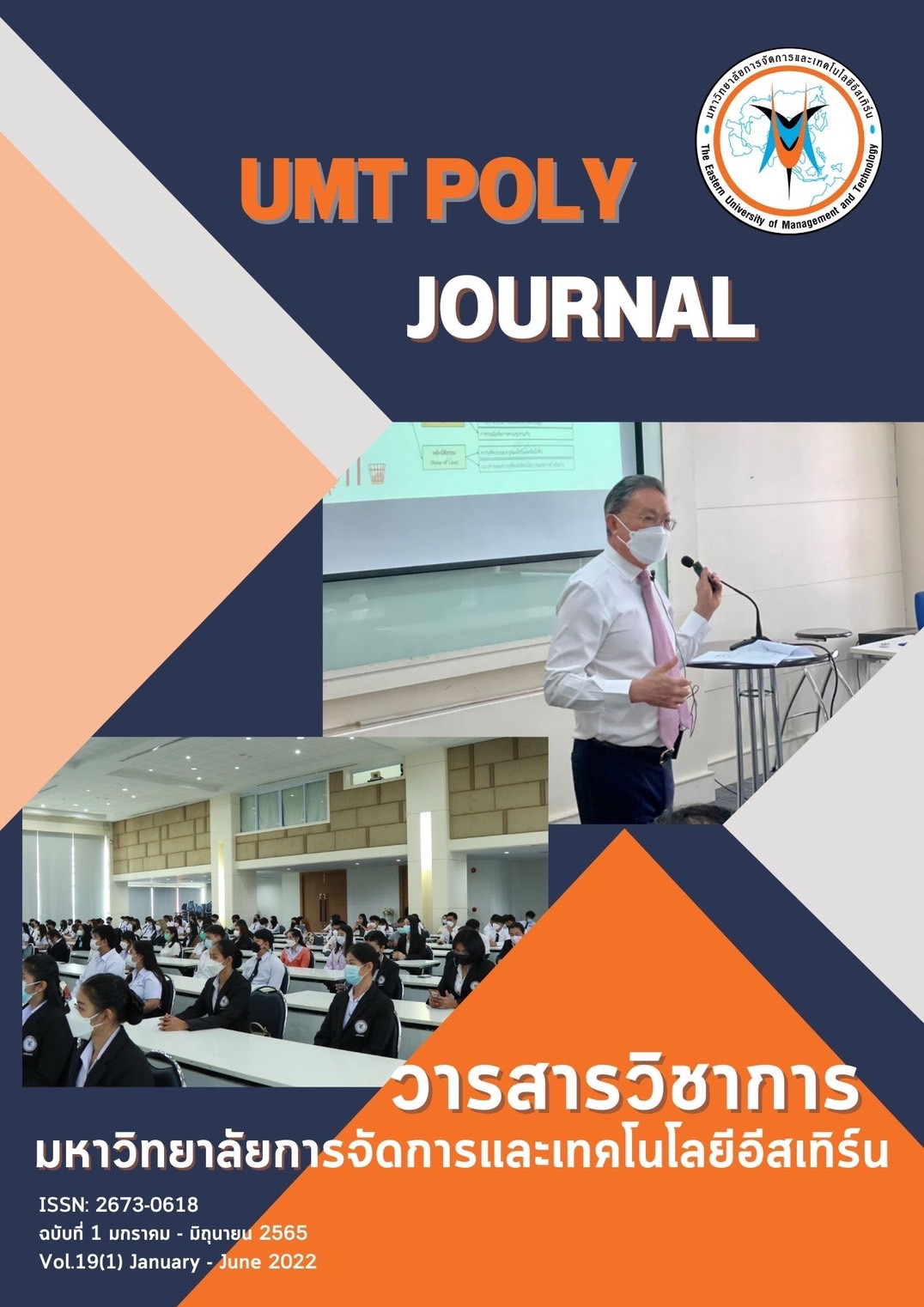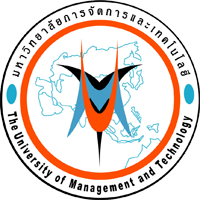ทักษะภาวะผู้นำและการจัดการเรียนรู้รูปแบบผสมผสานที่มีผลต่อคุณภาพการศึกษาของโรงเรียนในสังกัดสำนักงานศึกษาธิการภาค 14
คำสำคัญ:
ทักษะภาวะผู้นำ, การเรียนรู้แบบผสมผสาน, คุณภาพการศึกษาบทคัดย่อ
บทคัดย่อ
งานวิจัยนี้มีวัตถุประสงค์เพื่อ 1) ศึกษาลักษณะทักษะภาวะผู้นำ การเรียนรู้แบบผสมผสาน และคุณภาพทางการศึกษา 2) เพื่อศึกษาความแตกต่างและความสัมพันธ์ของตัวแปร 3) เพื่อวิเคราะห์อิทธิพลระหว่างองค์ประกอบดังกล่าว 4) เพื่อนำเสนอแนวทางพัฒนาคุณภาพการศึกษา โดยผู้วิจัยใช้แบบสอบถามไปรวบรวมความเห็นของกลุ่มตัวอย่างที่เป็นผู้บริหารและครูในสังกัดสำนักงานศึกษาธิการภาค 14 จำนวน 224 คนแล้วนำกลับมาวิเคราะห์ผลด้วยสถิติวิเคราะห์ค่าเฉลี่ย วิเคราะห์ความสัมพันธ์ วิเคราะห์ความแปรปรวนหลายทาง และวิเคราะห์ถดถอยพหุคูณ โดยมีผลวิจัยพบว่า
1) ลักษณะทักษะภาวะผู้นำและการเรียนรู้แบบผสมผสานอยู่ในระดับมาก ขณะที่คุณภาพการศึกษาอยู่ในระดับปานกลาง 2) ค่าเฉลี่ยของตัวแปรหลักทั้งสามมีความสัมพันธ์และแตกต่างกันอย่างมีนัยสำคัญทางสถิติ 3) อิทธิพลองค์ประกอบต่อคุณภาพการศึกษาประกอบด้วย ทักษะการเรียนรู้ ทักษะส่วนบุคคล ทักษะธุรกิจ ทักษะกลยุทธ์ การเรียนการสอน พื้นที่ และสภาพแวดล้อมการเรียน ทั้งนี้มีสัมประสิทธิ์อิทธิพล R2 ระหว่าง .30-.48 และ 4) แนวทางพัฒนาคุณภาพการศึกษาได้แก่ การพัฒนา ด้านทรัพยากรมนุษย์ อุปกรณ์การเรียน ข้อมูล และสมรรถนะหลักผู้เรียน
Downloads
เอกสารอ้างอิง
รายการอ้างอิง
Busch, D.S., Griffis, R., Link, J.S. & Abrams, K. (2016). Climate science strategy of the US
National Marine Fisheries Service. Marine Policy, 74:58-67
Das, R. Faculty, Department of Education, Cotton University,
das.rumpadas.rumpa02@gmail.com. The Attitude of students and teacher towards blended learning at the elementary level. Ilkogretim Online-Elementary Education Online, Year; Vol 20 (Issue 5): pp. 245-257 http://ilkogretim-online.org doi:10.17051/ilkonline.2021.0523
Friesun, N. (2012). Blended learning designates the range of possibilities presented by
combining Internet and digital media with established classroom forms that require the physical co‐presence of teacher and student. Report: Defining Blended Learning
Galvis, A.H. (2018). Supporting decision-making processes on blended learning in
higher education: literature and good practices review. International Journal of Educational Technology in Higher Education. (2018) 15:25 https://doi.org/10.1186/s41239-018-0106-1
George, K.M., Selvin, E., Pankow, J.S., (2018). Sex differences in the association of
diabetes with cardiovascular disease outcomes among African-American and white participants in the Atherosclerosis Risk in Communities Study. Am J Epidemiol. 2018;187(3):403–410.
Guzmán, V., Muschard, B., Gerolamo, M., Kohl, H., Rozenfeld, H. (2020). Characteristics
and Skills ofLeadership in the Context of Industry 4.0. Science Direct Procedia Manufacturing, 43 (2020) 543-550
Gyampoh, A. O., Ayitey, H. K., Fosu-Ayarkwah, C., Ntow, S. A., Akossah, J., Gavor, M., &
Vlachopoulos, D. (2020). Tutor perception on personal and institutional preparedness for online teaching-learning during the COVID-19 crisis: The case of Ghanaian Colleges of Education. African Educational Research Journal, 8, 511–518. http://doi.org/10.30918/AERJ.83.20.088
Jolliffe, A., Ritter, J., Stevens, D. (2012). The Online learning hanbook: developing and
using web-based learning. Routledge, eBook ISBN: 9780203062432
Kalayci, N., & Basaran, M. (2014). A Combined Approach Using Multiple Correspondence Analysis and Log-linear Models for Student Perception in Quality in Higher Education. Procedia Economics and and Finance, 17, 55-62.
Mumford, T., Campion, M., & Morgeson, F. (2007). The Leadership Skills Strataplex:
Leadership Skill Requirements across Organizational Levels. Leadership Quarterly, 18, 154-166. http://dx.doi.org/10.1016/j.leaqua.2007.01.005
Nell, C.E., & Cant.M. C. (2014). Determining student perceptions regarding the important service features and overall satisfation with the service quality of a higher education institution. Management, 19(2), 63-87.
Soeiro, D., Dias de Figueiredo, A. & Ferreira, J.A.G. (2012). Mediating Diversity and Affection in Blended Learning: a Story With a Happy Ending. Electronic Journal of e-Learning, 10(3).
Steer, L. Ghanem, H. & Jalbout, M. (2014). Arab youth: Missing Educational
Foundations for a productive life: The center for education at the Brookings institution: Washington, DC, USA, 2014: p.16
Stock, B.C., Andrew L.J., Eric J.W., Andrew C.P., Donald L.P., & Brice X.S. (2018).
Analyzing mixing systems using a new generation of Bayesian tracer mixing models. Published online 2018 Jun 21. doi: 10.7717/peerj.5096
Tarman, B. (2016). "Innovation and Education." Research in Social Sciences
And Technology, 1 (1): 77–97.
Tshabalala, M., Ndeya-Ndereya, C.N. & van der Merwe, T. (2014). Implementing
blended learning at a developing university: Obstacles in the way. Electronic Journal of e-Learning, 12(1):101-110
Yıldız, S.M. (2005). Beden eğitimi ve spor yüksekokullarında algılanan hizmet kalitesi
düzeyini ölçmeye yönelik kalite ölçeği, Gazi Üniversitesi Beden Eğitimi ve Spor Bilimleri Dergisi, Cilt 10 (4), Ankara.
UNESCO (2019). Defending the ‘right to the city’: How cities include migrants and
refugees in and through education. Retrieved form https://en.unesco.org/gem-report/taxonomy/term/210, Access to 15/08/2020
UNESCO (2005). Guidelines for Inclusion. Ensuring Access to Education for All France.
ดาวน์โหลด
เผยแพร่แล้ว
ฉบับ
ประเภทบทความ
สัญญาอนุญาต
ประกาศลิขสิทธิ์
เนื้อหาและข้อมูลในบทความที่ลงตีพิมพ์ในวารสารวิชาการมหาวิทยาลัยการจัดการและเทคโนโลยีอีสเทิร์น ถือเป็นข้อคิดเห็นและความรับผิดชอบของผู้เขียนบทความโดยตรง ซึ่งกองบรรณาธิการวารสารไม่จำเป็นต้องเห็นด้วยหรือร่วมรับผิดชอบใด ๆ
บทความ ข้อมูล เนื้อหาหรือรูปภาพ ฯลฯ ที่ได้รับการตีพิมพ์ในวารสารวิชาการมหาวิทยาลัยการจัดการและเทคโนโลยีอีสเทิร์น ถือเป็นลิขสิทธิ์ของวารสารวิชาการมหาวิทยาลัยการจัดการและเทคโนโลยีอีสเทิร์น หากบุคคลหรือหน่วยงานใดต้องการนำข้อมูลทั้งหมดหรือบางส่วนไปเผยแพร่ต่อหรือเพื่อกระทำการใด ๆ จะต้องได้รับอนุญาตเป็นลายลักษณ์อักษรจากวารสารวิชาการมหาวิทยาลัยการจัดการและเทคโนโลยีอีสเทิร์นก่อนเท่านั้น




